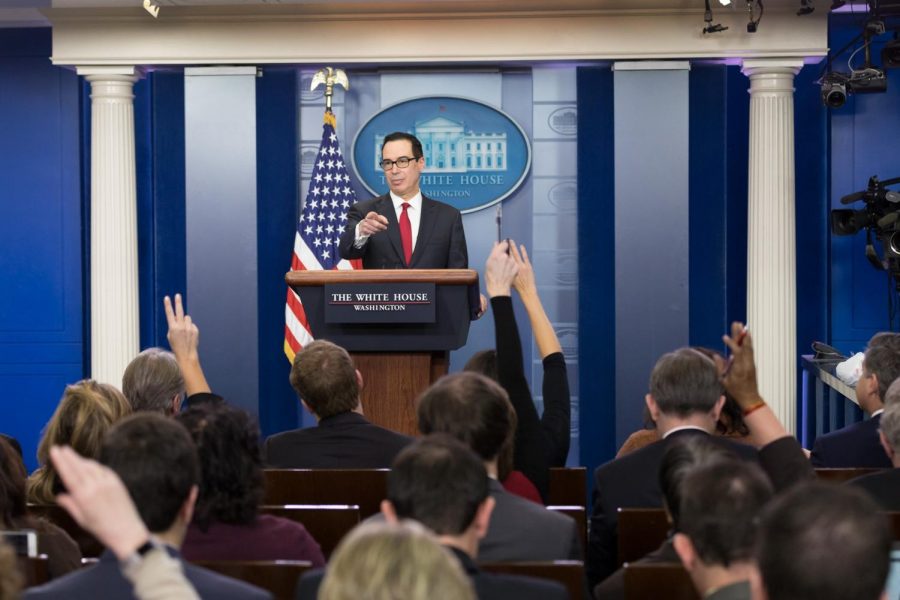Mainstream media isn’t fake news
There is a clear partisan slant in mainstream media, but that doesn’t make their reporting fake.
Andrea Hanks, White House Flickr, public domain
Secretary of the Treasury Steven Mnuchin holding a press conference.
The official Collins Dictionary Word of 2017 was “fake news,” defined as: “false, often sensational, information disseminated under the guise of news reporting.” This phrase has became not only synonymous with Donald Trump, but has also become a part of mainstream conversation; now when someone says something outrageous, it isn’t uncommon for someone to call it fake news.
Although there is a lot of potential for jokes to be made from this phrase, it is much more important that we look to its actual significance. Donald Trump uses this phrase as a way to deflect unfavorable news that was directed at him; publications that have often drawn his ire are CNN, MSNBC, Washington Post, and The New York Times. All of these publications are generally left leaning (some being more so than others), but it is worrying when a sitting president only attacks publications from the opposite side of the aisle and not publications that more mirror his own.
Although these publications do have an obvious bias and slant, they very rarely are actually fake.
— Henry Bird
One of the main problems is that although these publications do have an obvious bias and slant, they very rarely are actually fake. And, when they are, they make sure that they release retraction statements admitting to the actual fake news that they published. This is true of both right-leaning and left-leaning publications; looking at the history of CNN and Fox News, they both admitted when they published factually inaccurate information.
More of the problem with this “fake news” isn’t that what’s being reported is wrong; it’s with what newspapers are choosing to publish. Editors at Fox News understand that the vast majority of their readers are going to be Republicans who support Trump; therefore, they would be less likely to run a front-page story that details something Trump did wrong. MSNBC, on the other hand, would be more likely to report on this because they know their respective base is much more left-leaning.
That doesn’t mean that either publication is wrong or fake. But, it paints two vastly different versions of what actually goes on in our world. For instance, on January 16, CNN’s front page focused on Durbin’s reports over President Trump’s “shithole” comments; The New York Times headline was about the looming government shutdown, and Fox News was talking about the late Antoin Scalia’s support of Trump and Steve Bannon’s hearing with Congress.
Is any of that actually fake news? No. Steve Bannon did meet with the House Intelligence Committee, and Scalia did support Trump. At the same time, there was an impending government shut down shortly, and Durbin did release a report on Trump’s comments. None of what is listed there is factually inaccurate, but both sides are telling very different stories.
None of what is listed there is factually inaccurate, but both sides are telling very different stories.
— Henry Bird
And this is the actual worrying part about “fake news.” Depending on what media outlet someone reads, listens to, or watches, they get a completely different view of our president, our country, and our world. Because of the clear slant of so many mainstream media outlets, our country is more partisan and misinformed. Until media outlets begin to make a conscious effort to report on the full breadth of news, not just the news that they know their viewers want to see, America will only continue to tread down a path of hostile partisanship and anger.

















































